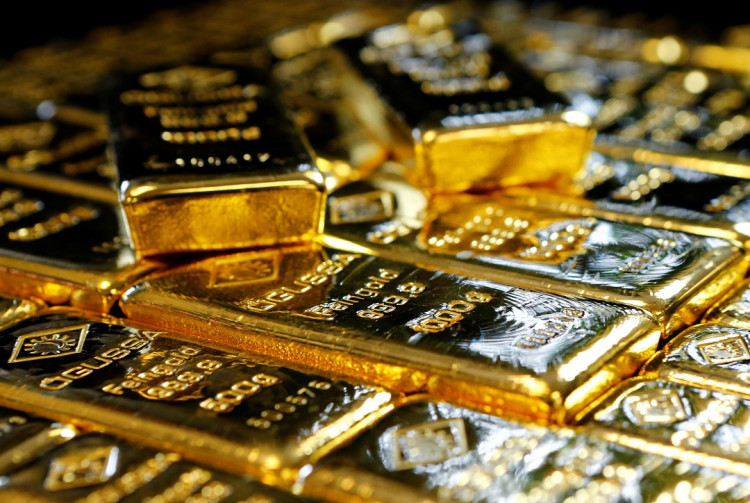The international gold price has reached a new historical high. On December 4, COMEX gold futures continued their upward trend from the previous week, briefly surpassing the $2,150 per ounce mark. Spot gold broke through the $2,100 per ounce barrier, reaching a high of $2,144.68 per ounce, setting a new record.
This surge in gold prices positively impacted A-share gold concept stocks, which showed strong performance. By the end of the trading day, Suzhou Haohong Technology Co., Ltd. (600128.SH) hit its upper limit, while Yulong Eco-Materials Limited (601028.SH), Chifeng Jilong Gold Mining Co., Ltd. (600988.SH), and Jinan High-tech Development Co., Ltd. (600807.SH) saw increases of over 5%. XiaoCheng Technology (300139.SZ), Shandong Gold Mining Co., Ltd. (600547.SH), Guanfu Holdings (002102.SZ), and Sichuan Goldstone Orient New Material Equipment Inc (001337.SZ) all rose by more than 4%.
The significant rise in gold futures and spot prices is mainly attributed to the market's expectations of a rate cut by the Federal Reserve.
Federal Reserve Governor Christopher Waller recently suggested that policymakers might not need to raise interest rates again and could consider cutting rates in a few months if inflation continues to decline. This has led to heightened market expectations of a Fed rate cut by the end of the first quarter of next year.
A rate cut by the Fed typically leads to a decline in the U.S. dollar exchange rate. The international gold price trend is generally negatively correlated with the U.S. dollar index, meaning that when the dollar strengthens, gold prices tend to fall, and vice versa.
Fed Chairman Jerome Powell, in a public statement on December 1, said it was "too early" to discuss rate cuts. However, he also noted that the risks of insufficient tightening and excessive tightening are being balanced, and the Fed's policy setting has already moved deeply into restrictive territory, working as expected.
Despite Powell's remarks, the market continued to bet on rate cut expectations. On December 1, spot gold rose 1.6% to $2,069 per ounce, briefly reaching $2,075 per ounce, breaking the historical record set in 2020.
Independent metal trader Tai Wong noted that gold bulls are focusing on Powell's comments about interest rates entering a restrictive zone, which aligns with the notion that rate cuts could come sooner. However, they are deliberately overlooking his warnings that rate cuts are not imminent.
Other factors driving gold prices include central banks increasing gold reserves and safe-haven demand triggered by geopolitical conflicts. A survey by the World Gold Council showed that 24% of central banks plan to increase their gold reserves in the next 12 months due to growing pessimism about the U.S. dollar as a reserve asset.
Bart Melek, head of strategy at TD Securities, said strong central bank buying will be a key catalyst for higher gold prices. If the Fed changes its policy direction, a weaker dollar could reduce the cost of gold for international buyers, thereby boosting demand.
Melek expects the average gold price to reach $2,100 per ounce by the second quarter of 2024.
Everett Millman, chief market analyst at Gainesville Coins, predicts that the upward trend in gold prices will continue until the end of this year, possibly setting new records.
BMI, a subsidiary of Fitch Solutions, recently released a gold outlook, stating that gold prices may remain in the $1,900 to $2,000 per ounce range in the coming months.






